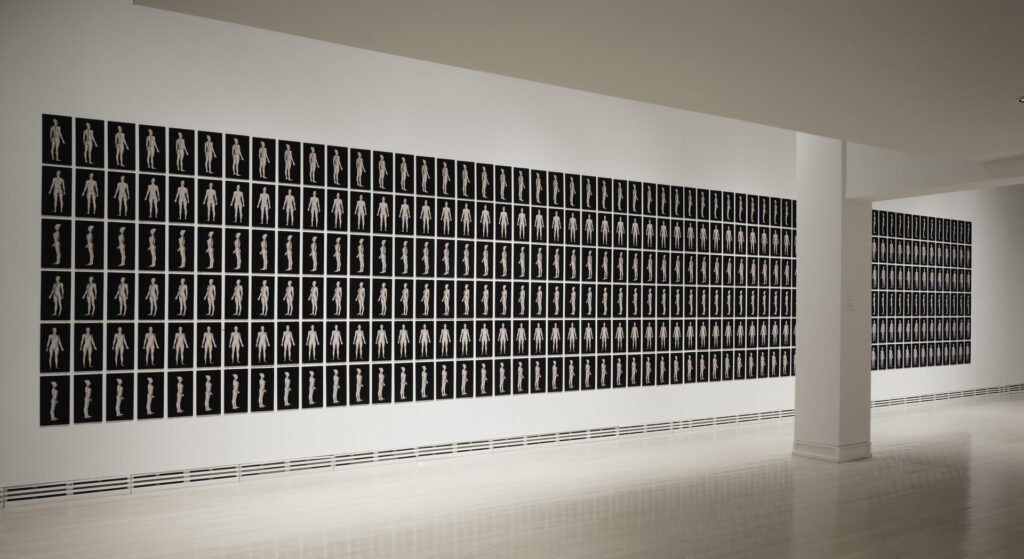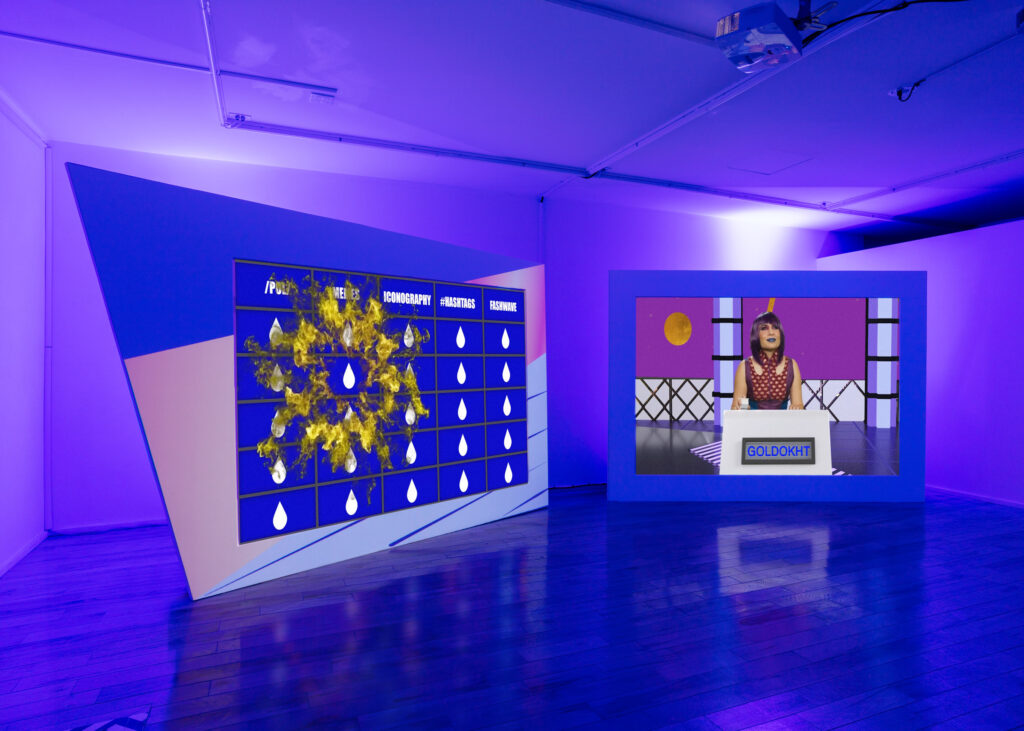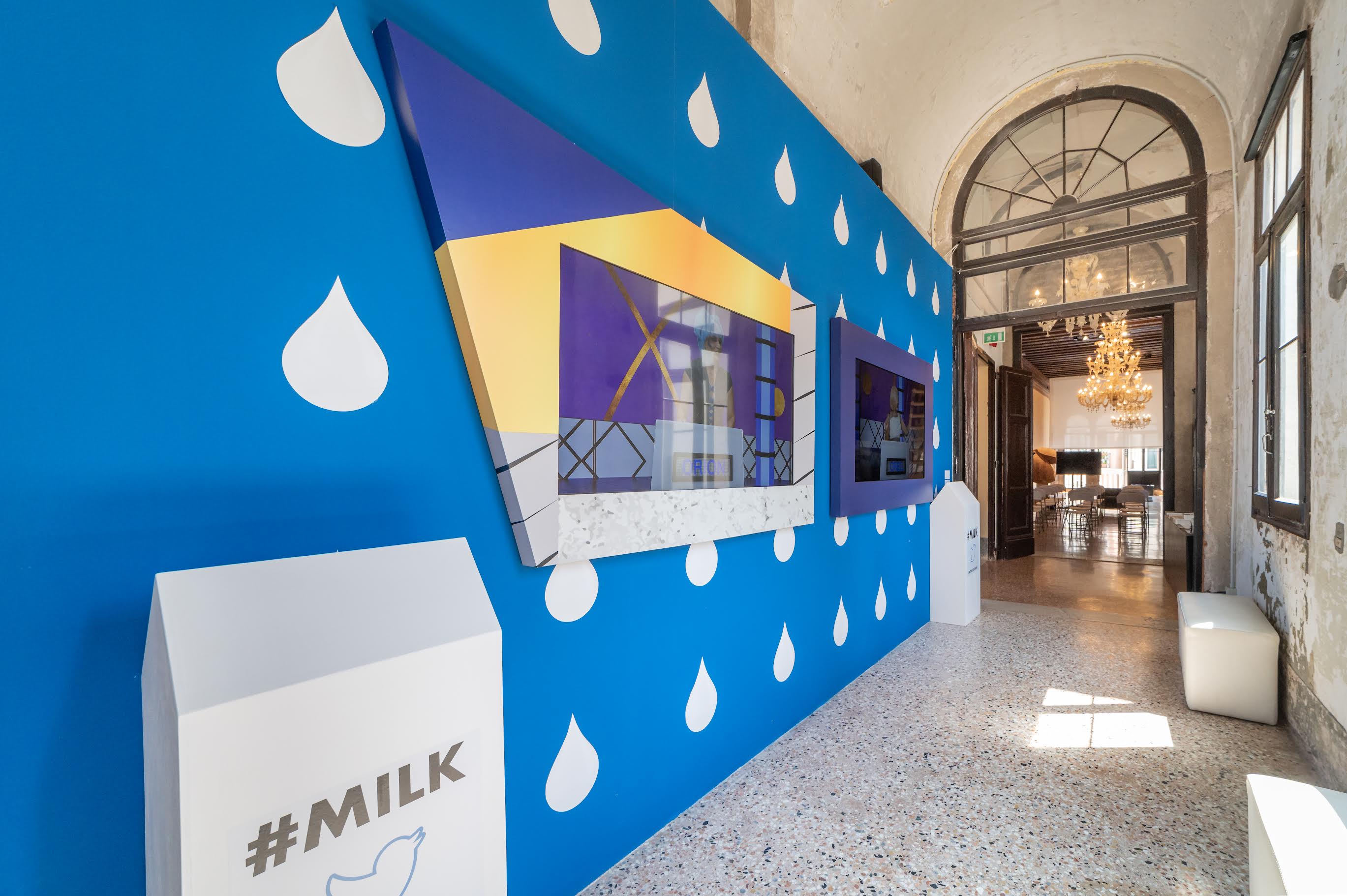Tamil Archive Project (TAP) is a decentralized artist collective founded in Scarborough. Home of Tamil Futures, Bambaram, Archive Division, and Healing Arts Dinner Circle. Since 2016, we centre communal care through combining art creation, knowledge sharing, digital culture, and archival practices into accessible events for the community .
Bambaram is a group of artists and coders from across the globe at TAP focusing on the intersections of art and technology in racialized communities. By investigating the evolving identity of art, they attempt to understand, reinterpret, and reclaim tradition, ritual, and art through their work.
Kolams are intricate patterns drawn by women on the front entrance of their homes as a way to mark occasions such as Tamil New Year on April 14th. An ancient art form combining advanced drawing skills and mathematics, kolams are rituals passed down through generations that take a lifetime to master. In the diaspora, they are a disrupted practice lost to the past. Each imperfect kolam by Aarati Akkapeddi, Alex Mahesvaran, Luxvna Uthayakumar, Vinutha Vasanthi Venkatesh takes over the screen in an attempt to reconnect to ritual, reclaim public spaces, and celebrate matrilineal histories.

Luxvna Uthayakumar
Creating this kolam was a process – it started out with the intention of using scans of objects and Adobe Illustrator to mock up a pattern. What I discovered through using the scans and the program was that I stretched the traditional way of making a kolam so far, in so many highly processed ways, only for the familiarity to come back around again. Presented on the gallery wall are the outlines that Adobe Illustrator created with my scans, something eerily reminiscent to the geometry of a traditional kolam.
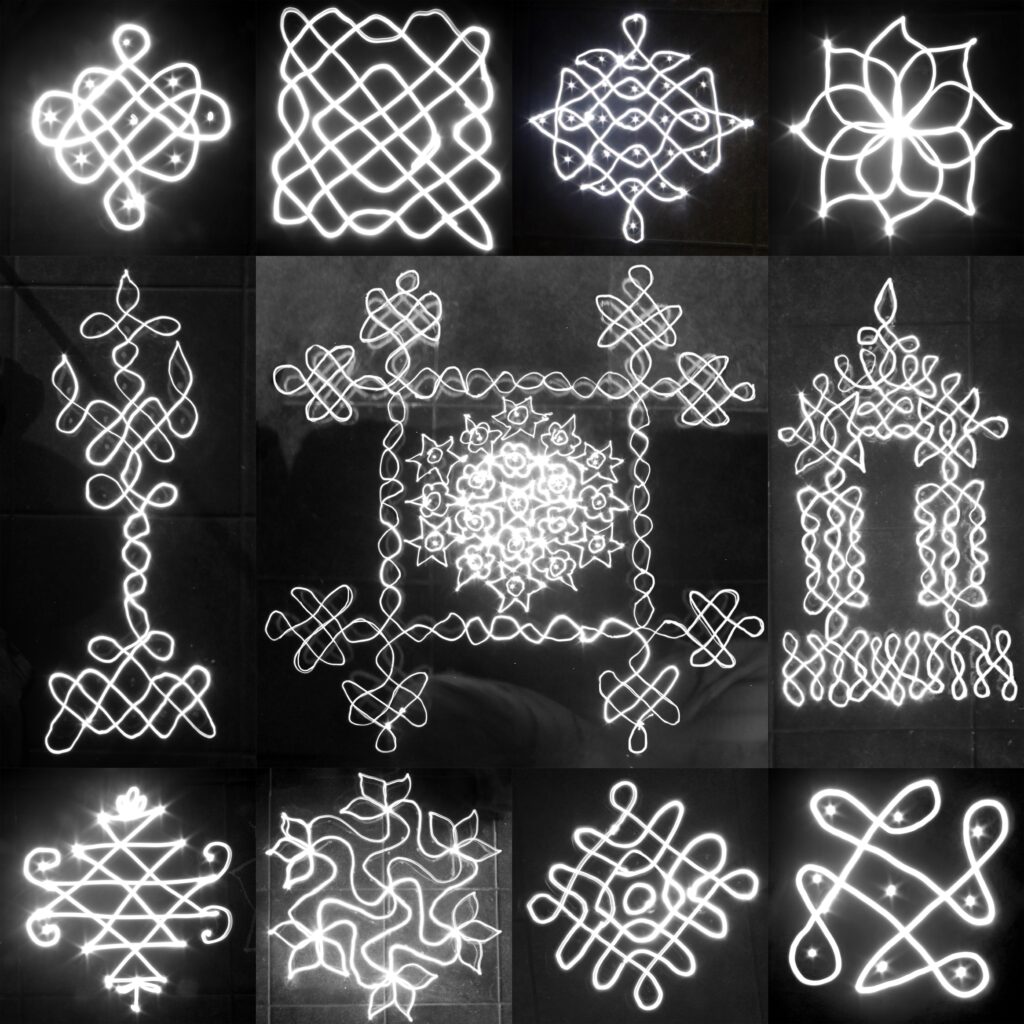
Vinutha Vasanthi Venkatesh
Thinking about recreating and re-adapting the concept of a kolam through a digital medium that would allow me to create a deeper bond with the artform, I decided to use light. In this collage I adapted the process of long-exposure photography to capture 11 kolams as light drawings. As I ritualistically traced and retraced the kolams I had drawn on the floor with a small light held in my palm I found myself mimicking the actions of traditional kolam making and memorizing the intricacies of the patterns.
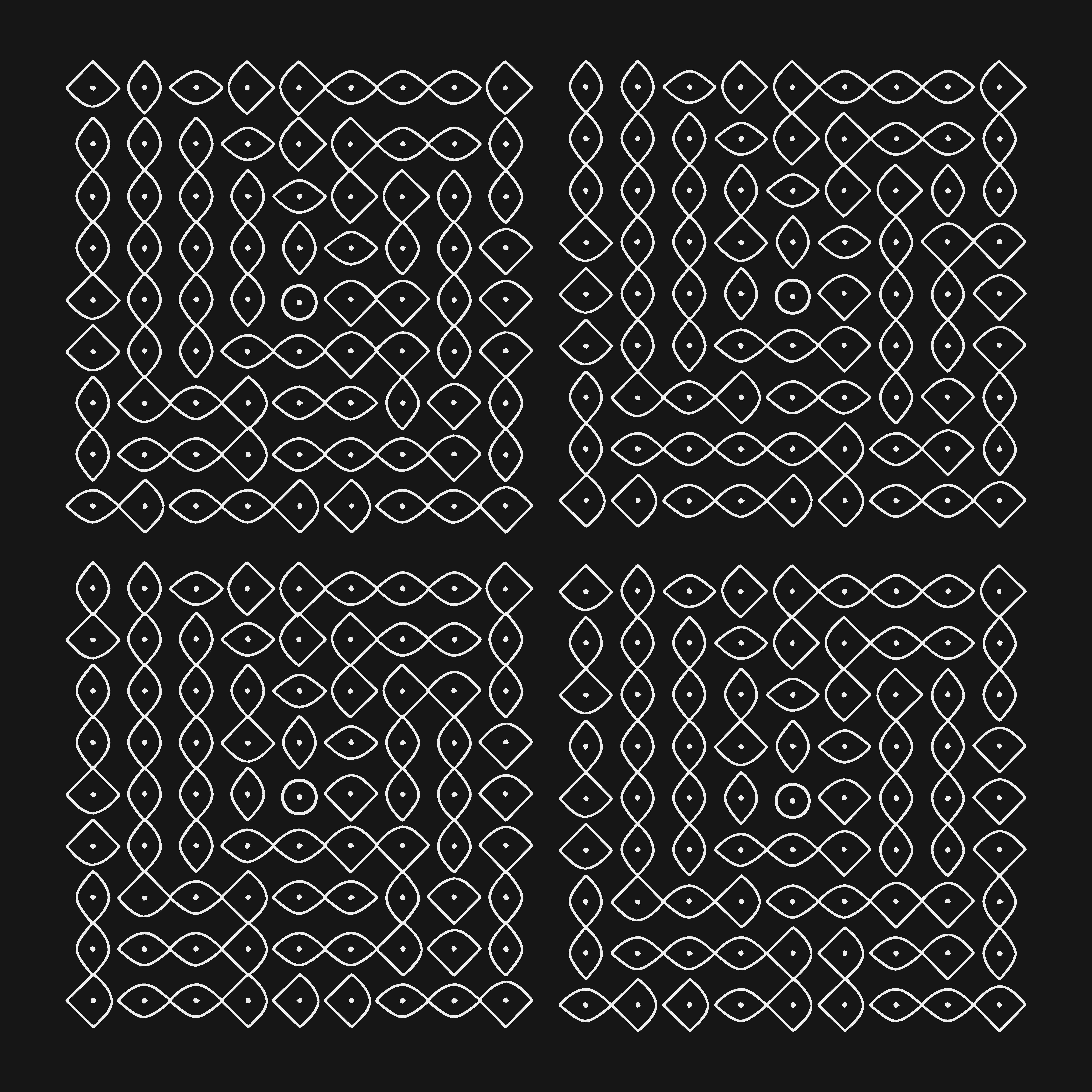
Aarati Akkapeddi
These are four different kolams. Encrypted text for each kolam is clockwise starting from the top left: “06 01 1921”, “10 14 1938”, “11 06 1965”, “12 29 1992”. These are the birthdays in chronological order of my paternal grandmother, my maternal grandmother, my mom, and myself.

Alex Mahesvaran
This kolam is a visual representation of the word and popular toy called Bambaram in Tamil. The repetition of this word though the interconnecting shapes and lines form together the image, also commonly known as a spinning top in English.
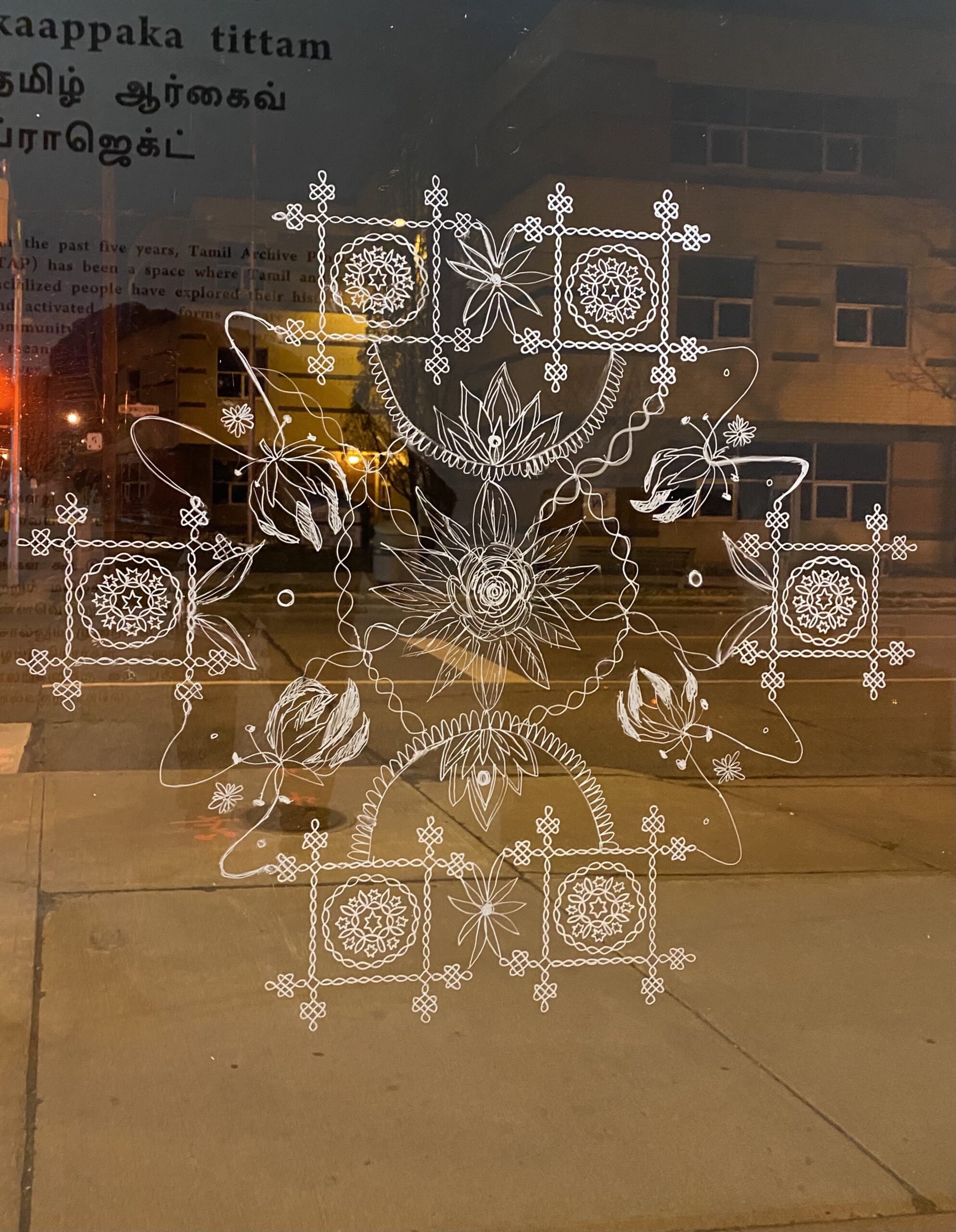
Vithurry Sivaloganathan
Tamil Archive Project’s bambaram members created a kolam on display for a day. The journey started with a grandmother in Tamil Nadu teaching her grandchild Vinutha in Texas to hand draw patterns, then digitally translated by Alex in Scarborough, and then outer patterns drawn by Luxvna of Scarborough on a window in Parkdale, with the intricate inner patterns freehand by Vithurry of North York, and erased by Vasuki of Toronto. This kolam was to welcome the Tamil New Year and share our hope for better times with the surrounding community who had welcomed us into this space.
